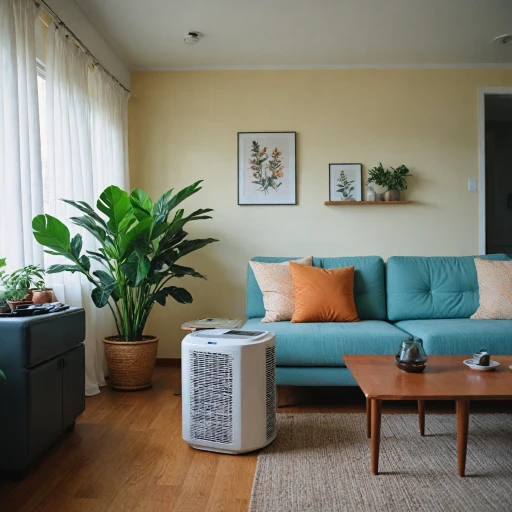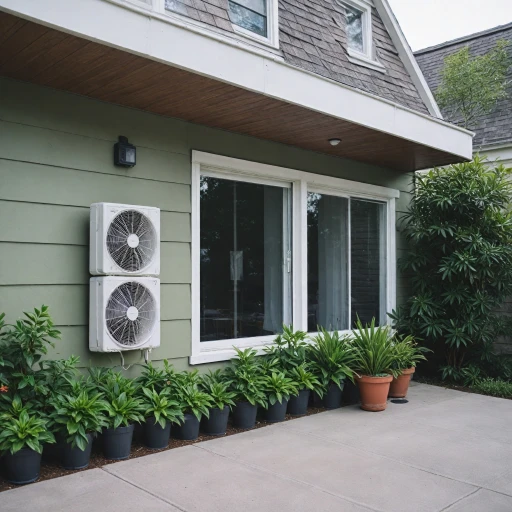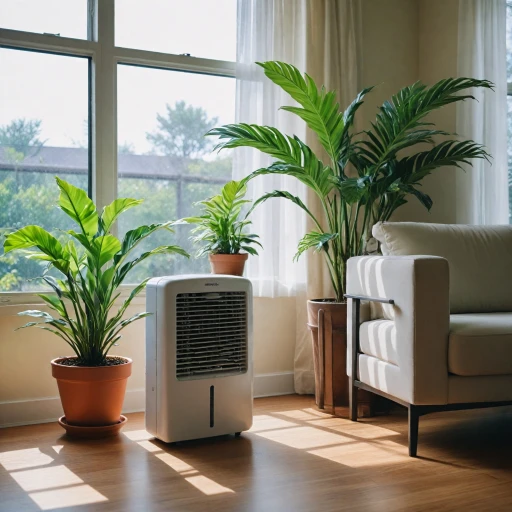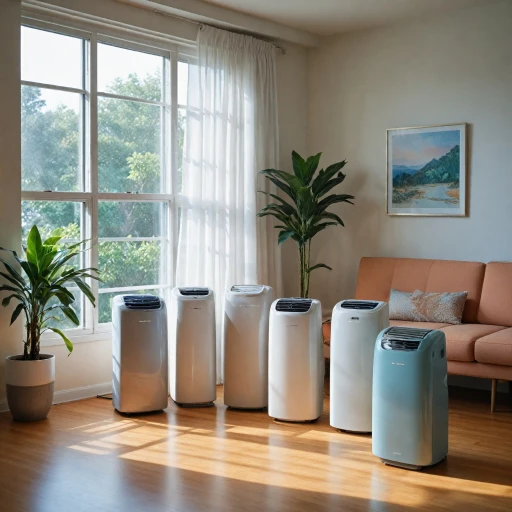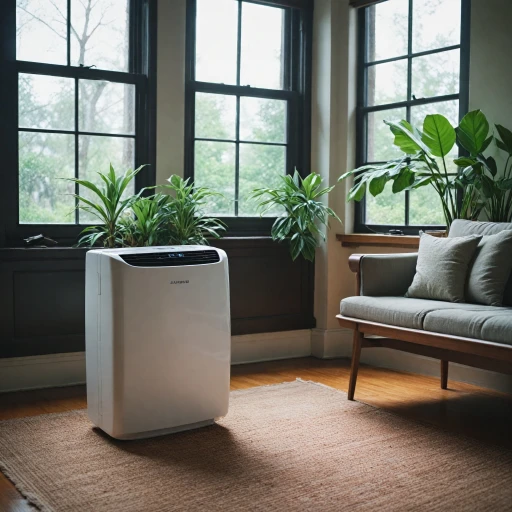
What is a Mini Split AC and Heating System?
A Versatile Solution for Home Comfort
When it comes to maintaining an optimal temperature at home or in the office, a mini split AC and heating system presents a versatile solution. Unlike central air conditioning systems that rely on extensive ductwork, these systems are designed to provide both cooling and heating without ducts, thus earning the term ductless mini splits. This flexibility makes them particularly appealing for homeowners interested in targeted temperature control.Components and Functionality
The mini split systems consist of two main components: an indoor air-handling unit and an outdoor condenser/compressor. The absence of ducts implies that the indoor units can be strategically placed throughout a space, creating individual zones that can cater to specific cooling or heating needs. This DIY-friendly setup offers homeowners the liberty to design a system that fits their individual requirements and budgets.Variable Zone Comfort
One of the hallmark features of these systems is their ability to create single zone or multi-zone setups. This means consumers can efficiently heat or cool specific areas or rooms without impacting the entire home. Mini split units are available in various sizes measured in BTU, allowing them to handle anything from a small room to an entire floor. The systems use inverter technology to adjust the output according to the current demand, ensuring energy efficiency and cost-effectiveness. To learn more about the comprehensive functioning of these systems, check out this guide to portable AC units with ductwork.Benefits of Mini Split Systems for Portable Air Conditioning
Advantages of Utilizing Mini Splits for Cooling
Mini split systems offer a perfect solution for those seeking effective and customizable air conditioning. They are especially beneficial for portable air conditioning needs due to their versatile design and efficient performance. A key advantage of mini splits is that they are ductless, meaning they bypass the need for extensive ductwork that traditional systems require. This not only makes them more convenient to install but also reduces the loss of energy that can occur in duct systems.
With a mini split system, you have the flexibility to create different cooling zones within your home. Each unit can be set to a different temperature, catering to individual preferences and maximizing comfort. This zoned cooling capability is particularly advantageous in homes where certain rooms need to be of different temperatures.
These systems come equipped with inverter technology, allowing them to maintain the desired temperature with maximum efficiency and minimal fluctuations. The mini split's ability to cool or heat single zone areas using a heat pump system provides an added layer of utility, which is beneficial for both summer cooling and winter heating.
Energy efficiency is another strong suit of mini split systems. With their high SEER ratings and Energy Star certifications, they often outperform many portable air conditioners when it comes to energy savings. This translates to lower monthly utility bills, making mini splits a cost-effective choice over time.
Choosing a ductless mini split system with free shipping options can also significantly reduce initial expenses. There are systems available at various price points, allowing you to find the perfect balance between affordability and performance. If you're considering installing one yourself, many mini splits are marketed as DIY-friendly, though professional installation is always recommended for optimal results.
Understanding these benefits of utilizing mini splits can help homeowners make informed decisions, ensuring a comfortable and energy-efficient environment.
Installation Considerations for Mini Split Systems
Key Considerations for Installation Process
Installing a mini split system for your portable air conditioning needs requires careful planning and consideration to ensure optimum performance. Being a ductless option, it offers flexibility in placement but demands specific attention during installation. Here's a closer look at what you need to know:
- Appropriate Location: Identifying the right spot for both the indoor and outdoor units is crucial. The indoor unit should be strategically placed to provide efficient air circulation without any obstructions. The outdoor unit needs sufficient space to vent heat away effectively without hindrance, impacting the system’s BTU output.
- DIY vs. Professional Installation: Although some mini splits are DIY-friendly, professional installation is often recommended to ensure a properly functioning system. A certified technician can assess your specific requirements, ensuring the right BTU ton capacity and SEER ductless configuration.
- Electrical Considerations: Ensuring that your power supply meets the requirements of the mini split system is vital. The unit must be compatible with your home’s electrical system to prevent any potential issues that could arise from incorrect voltage or wattage.
- Pipe Insulation: Proper insulation of refrigerant pipes is necessary to prevent energy loss and enhance efficiency. This step is key to maintaining the expected SEER rating, contributing to energy efficiency and sustained cost savings.
For those considering the installation of efficient heating and cooling solutions, mini splits offer significant advantages in terms of functionality and cost-effectiveness. Compared to traditional systems, the simplicity in design and reduced installation complexity make them a viable option. Interested in exploring compact options? Finding the perfect compact portable air conditioner can provide further insights into portable mini split solutions.
Energy Efficiency and Cost Savings
Optimizing Energy Use with Efficiency Ratings
When evaluating the energy efficiency of mini split systems, it’s essential to look at the SEER (Seasonal Energy Efficiency Ratio) ratings. High SEER ratings point to better energy efficiency, translating to cost savings over time. A unit with a rating of 20 SEER or higher is particularly efficient, aligning well with the needs of consumers who prioritize low energy bills.
Harnessing the Benefits of Inverter Technology
Many mini split air conditioners incorporate inverter technology, which adjusts the compressor speed to maintain the desired temperature without the energy spikes associated with traditional systems. This continuous operation not only contributes to energy conservation but also extends the life of the unit, reducing the need for frequent replacements and repairs.
Understanding the Benefits of Dual Functionality
A notable advantage of split air systems is their dual functionality, effectively serving as both air conditioners and heat pumps. This adaptability allows users to maintain comfort year-round, potentially reducing reliance on separate heating systems during colder months and contributing to further energy and financial savings.
Cost Implications of Different Configurations
While the initial price of mini splits can appear higher compared to other portable air conditioning options, the long-term savings on energy bills make them a wise investment. Additionally, availability of incentives such as rebates for Energy Star-rated models can make these systems even more attractive economically.
Choosing a mini split for your space not only provides efficient cooling and heating but also pays off in reduced operating costs over time. With considerations around SEER ratings, inverter technology, and the dual capability of systems, these units are a strong contender in the quest for energy-efficient climate control solutions.
Common Challenges and Maintenance Tips
Addressing Common Issues for Optimal Performance
Dealing with common challenges in maintaining a mini split system can sometimes be daunting, but understanding these hurdles can help prolong the life and efficiency of the unit. Although these systems, renowned for their energy efficiency and ductless setup, offer numerous benefits, they are not without their own maintenance needs.- Cleaning and Filter Maintenance: Regular cleaning is pivotal for ensuring that your mini split air conditioner runs efficiently. Dust and debris accumulation in filters can reduce airflow, forcing your system to work harder and leading to increased energy consumption. Routine cleaning, usually on a monthly basis, will help prevent such issues.
- Checking the Outdoor Unit: The outdoor component, often overlooked, requires inspection to remove any obstructions such as leaves or debris that could affect heat exchange. Keeping the area clear will help maintain its efficiency.
- Refrigerant Levels: Maintaining adequate refrigerant levels is crucial. Low refrigerant can lead to decreased cooling and inefficiency in both heating and cooling functions. This issue is best addressed by a professional who can accurately assess and top up the refrigerant.
- Electrical Inspections: It's essential to check for any electrical faults or loose connections. These checks ensure that your system operates safely and reliably, preventing any unexpected shutdowns, which can be key, especially during extremes in weather.
- Seasonal Checks: Given that mini split systems are often used for both heating and cooling, transitioning between seasons is an ideal time to have a professional conduct thorough inspections. This can include checking the heat pump, inverter, and system’s overall SEER (Seasonal Energy Efficiency Ratio) ratings to ensure everything is optimized.
Comparing Mini Split Systems to Other Portable Air Conditioners
Considering the Better Option for Portable Air Conditioning
When seeking a portable air conditioner, it is essential to evaluate different systems to determine which fits your needs best. Mini split systems offer a compelling option when compared to traditional portable air conditioners, and here’s why:- Efficiency: Mini split systems are known for their high SEER ratings, making them an energy-efficient choice. Many models are Energy Star certified, providing significant cost savings in the long run due to reduced energy consumption.
- Heating and Cooling: Unlike typical portable units, mini splits often come with a heat pump function, allowing simultaneous heating and cooling. This offers versatility throughout the year, handling varying temperatures with ease.
- Noise Levels: The ductless design of mini split systems means that the noisy compressor is located outside, resulting in a quieter indoor environment which is not always the case with portable air conditioners.
- Installation Variety: While mini splits require professional installation, they offer permanent solutions that more than make up for the initial setup effort. On the other hand, some portable units are DIY friendly, allowing more flexibility but potentially less efficiency and power.
- Zone Control: One of the significant benefits of mini splits is the ability to establish multiple zones with separate controls—a feature that traditional portable air conditioners do not offer.
- Cooling Capacity: Mini splits can provide robust cooling with high BTU ratings that cover larger spaces. This contrasts with the limited square footage that typical portable air conditioners can handle.
- Considerations: While mini splits hold numerous advantages, their higher price point and specific installation requirements could be a drawback for some. However, if budget and permanency aren’t constraints, a mini split system might offer superior comfort and efficiency.


